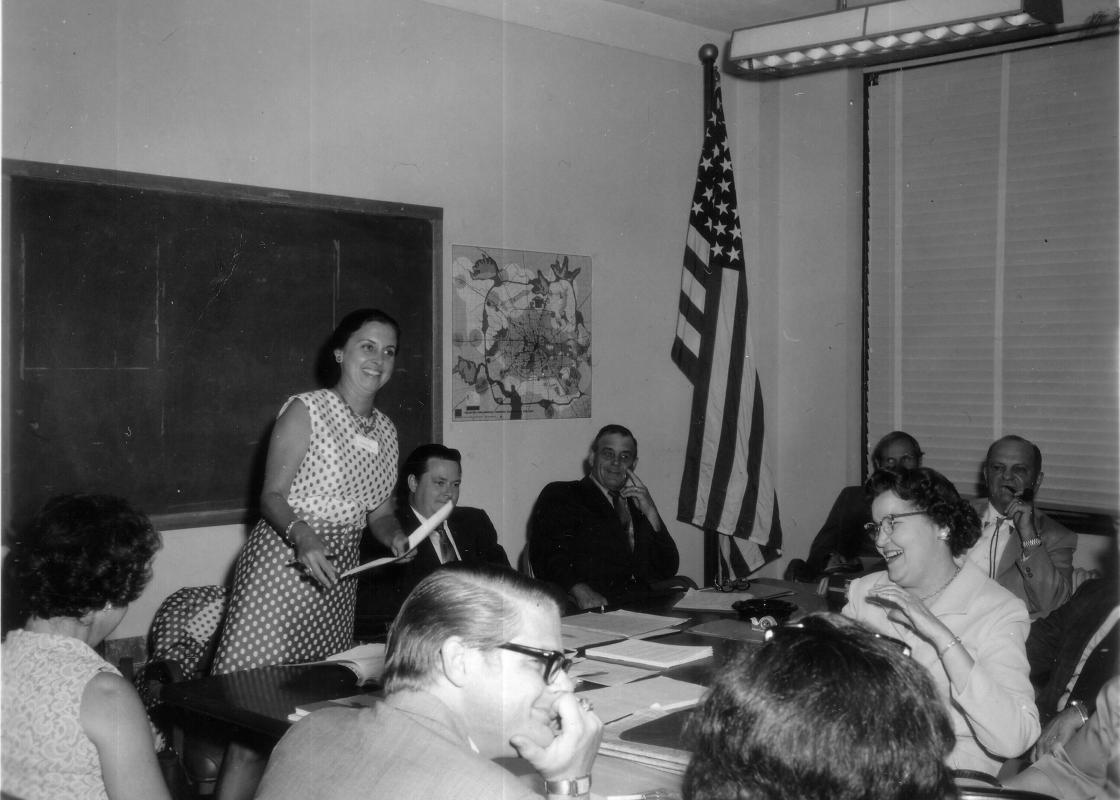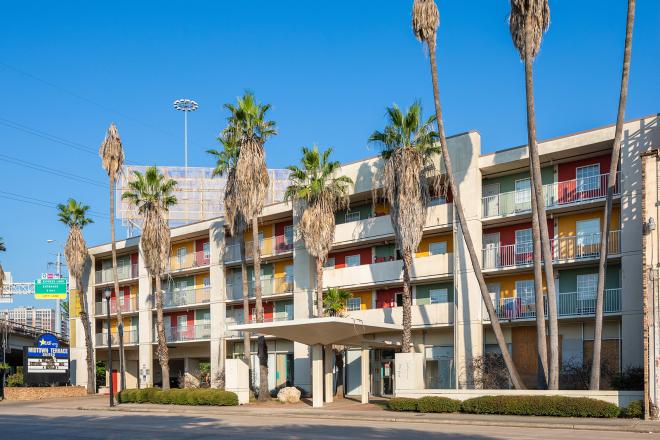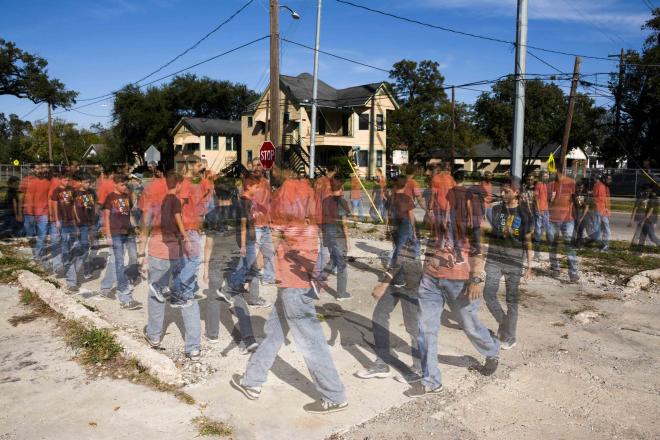Terry Hershey, who President George H. W. Bush called "a force of nature for nature," recently died at the age of 94. She led efforts to protect bayous and was a speaker at the first major event organized by the Rice Design Alliance (RDA), a 1973 civic forum on flood management and the future of the bayous. Forty-four years laters, while many of her visions have been realized, many challenges and opportunities remain. Learn more about living with bayous at RDA's March 8 civic forum and H20uston architecture tour, March 25 and 26.
On January 22, 2008, Hershey spoke with Ann Hamilton, a longtime friend who served as executive director of the Park People and the Houston Parks Board. Below is an edited excerpt of the interview, conducted for the Houston Oral History Project at Hershey’s home.
Ann Hamilton: What started you in the environmental movement here?
Terry Hershey: What started me was the day [c. 1967] Ernie Faye was going to pick me up and pick his wife up. He said, "Well, they've started." And I said, "Who started what?" He said, "They've started concreting Buffalo Bayou." And I said, "What?"
Of course, I don't live on Buffalo Bayou. I live on a tributary. So, I had never really stared at it except, as all of us do, crossing it. The next morning, I called Mary Kelsey next door and Isabel Steenland, and we all went out to look at Chimney Rock. They had cut down nine acres of beautiful trees and were busy digging a ditch and moving Buffalo Bayou where it is now, under the bridge at Chimney Rock. That seemed awful stupid to me and so I thought I would just sort of find out what was going on. The next day I found out we had a county commissioner. His name was Squatty Lyons and I called him up to see what was happening. He said, "Oh, Mrs. Hershey, it is them big government fellows that are coming in and pushing us around." I said, "What big government fellows?" And he said, "Oh, that Corps of Engineers."
Well, my husband Jake's business was American Commercial Barge Lines. He started this big business on the Mississippi. And so, I had had meetings with the Corps and they weren't all that stupid. So, I said, "Well, why does it say Harris County Flood Control all over the trucks?" and he said he didn't have time to talk to me anymore and hung up and it made me mad and I stayed mad for 30 years. But anyway, I dug into it to find out what was going on and I found out that the Harris County Flood Control had cut off five tenths of the bayou generally to benefit a real estate person and straightened it out. You see, the city of Houston flooded in 1935 downtown, up to the second floor, and the city fathers turned to the Corps and said, “Save us.” So, they came in and designed Addicks and Barker Reservoir. And to avoid flooding downtown, they recommended straightening and stripping Brays, Buffalo, and White Oak rivers, and dumping all the water down quicker. Now, somehow my philosophy and psychology background thought that was pretty stupid, so I kept asking around and found some people that also thought it was stupid. We formed what is now the Bayou Preservation Association (BPA), but at that point it was the Buffalo Bayou Preservation Association. One year into it, we dropped the Buffalo because we realized what had already happened to Brays and was happening to White Oaks. We managed to save Buffalo with a little help from the two Georges: George Mitchell was the BPA president at that time and George Bush Sr. was our congressman.
AH: Let's talk a little bit about George Bush Sr. and his reaction to when you went to visit with him about Buffalo.
TH: Well, he looked at the pictures and had the same gut reaction as anybody that did look at the pictures of a concrete river. It is common sense to realize that a curving river --- we call it the floodplain now --- holds water back and absorbs water. I said there are curly engineers and there are straight engineers. Straight engineers go from point A to point B if you hire them to do that and they think that is fine. Curly engineers look at the bigger picture. We just needed some curly engineers and we got them.
AH: George Bush Sr. was really on your side from the very beginning?
TH: George Bush set up a meeting with the Subcommittee on Appropriations [of the United States Congress] and all the men involved --- George Mitchell, Ernie and Elkins --- were too busy to go, so they put me on a plane and sent me up there. I am making the pitch about how stupid it is and George is running up and down with the pictures showing them what it looked like. There is nothing like a picture, you know. And finally, when he paused or something, one of them said ... it was later afternoon, I remember that ... and he said, "Congressman, do we understand you are asking us not to spend money in your district?" and George gulped and he said, "I think there is a better way to manage storm water than concreting rivers and I would like the Corps to do a restudy." And they got up and walked out. I said, "Well, what happened?" He said, "I think we won." So, he took me back and put me on a plane. I came home and said, "Well, Jake, that wasn't hard." We fought for 4 to 5 more years but he stayed behind us. If it hadn't been for George Bush, Sr., we would have a concrete river in Buffalo Bayou.
AH: Well, I might add for Terry Hershey, too, because you had a lot to do with it.
TH: Well, there is always a woman behind pushing somewhere.
AH: You were honored by the Buffalo Bayou Partnership, which is doing quite well.
TH: I am glad when they started because they took Buffalo from town down and we were sort of upstream on Buffalo Bayou, but anyway we got it saved. Brays was already done. Of course, Brays flooded eight times after it was straightened and lined with concrete, and the thing that really bothers me is when it flooded the Medical Center several times --- the time that it killed all the animals in the basement, all the primates.
AH: Yes, that was Allison.
TH: 4,000.
AH: Oh, terrible.
TH: 4,000 critters died in their basements.
AH: And isn't it funny that now, back out on Brays Bayou, trying to buy off land to make it more natural, to have jogging trails, so it all comes around, doesn't it?
TH: Yes.











